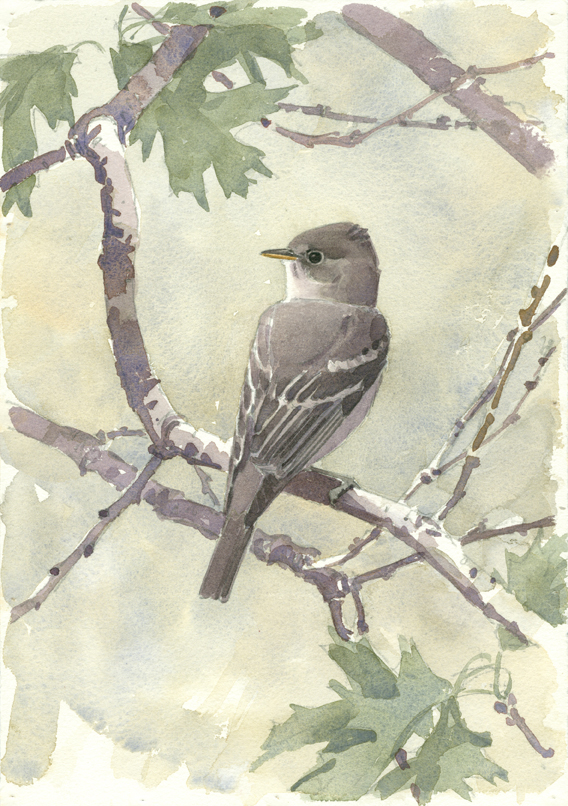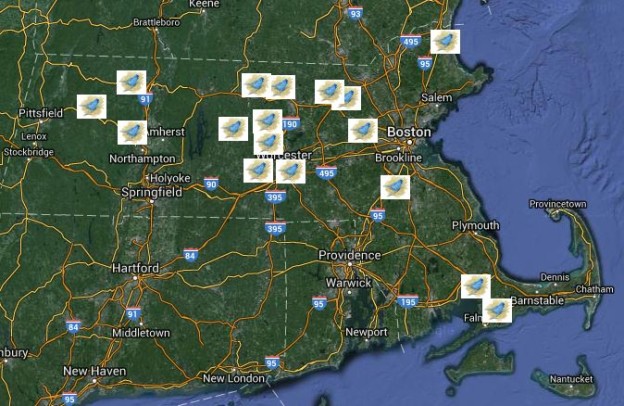This is from a series of posts by MABA resident artist Barry Van Dusen
Nashoba Brook Wildlife Sanctuary, Westford May 29, 2015
The first thing I hear after getting out of my car at the Nashoba Brook Wildlife Sanctuary in Westford is the plaintive call of the eastern wood-pewee. These birds are more often seen that heard, but I track this one down and start sketching. It’s a humid, overcast morning, and the mosquitoes are a challenge!

sketchbook page, 9″ x 12″
The differences between some species of birds are so subtle that the little things can make a big difference. Things like tail length, head size and wing-tip length – in other words proportions.

Eastern Wood-pewee, watercolor on Strathmore Gemini cold-press, 11″ x 8″
Although there are a few “field marks” here to help identify this bird as an eastern wood-pewee (note the orange lower mandible, long wing tips and upright posture), a lot of the story is told with subtle adjustments of proportion and shape. Compare my pewee with a study done earlier this spring of an olive-sided flycatcher (observed at Quabbin Park on May 13).

Olive-sided Flycatcher, watercolor in Stillman and Birn beta sketchbook, 9″ x 8″
Both birds belong to the same genus (Contopus), but the differences in proportions are striking. The olive-sided has an oversized head and bill, very long wingtips and a dinky, undersized tail!
Technical note: The wood-pewee watercolor you see here is what I call a “re-painting”. I started a watercolor of the bird on location, but I made some poor compositional decisions and then tried to correct them, which led to a confused and overworked mess! However, even a “failed” field painting contains a great deal of information that can be re-used later in the studio. Back home I re-painted the scene, refining the drawing and correcting the compositional errors I made in the field. This “second time around”, I painted with confidence and purpose, and avoided all the mistakes from my first attempt!





